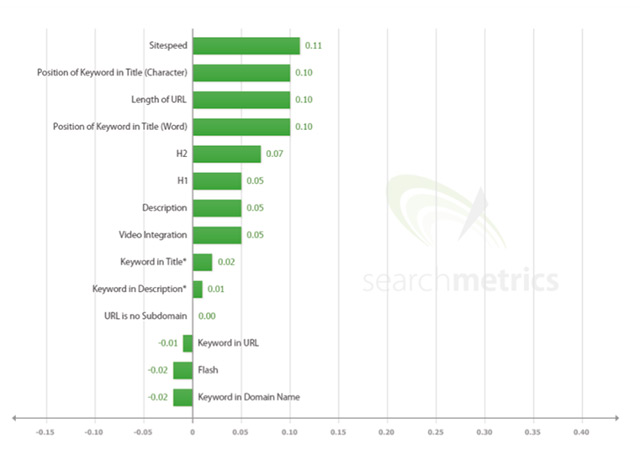What makes some sites rank higher on search results than others. Google takes into account a list of factors that differentiates the higher ranking sites from those that cannot make it to the top. Just like every year, this year also Searchmetrics has released its SEO ranking factors study. The 2014 study, which is said to be the largest study by Searchmetrics so far, is now ready to download.
The 100 page study emphasizes that content is no longer just a part of your SEO strategy but the main focus of your campaign. Here are the key takeaways from the study. If you wish to download the full study, click here.
Content
- The quality of content and rankings are correlated. This is demonstrated by, among others, the analysis of two new features based primarily on word co-occurrence analysis: Proof and Relevant Terms.
- The lengthier the content the better.
- Another important factor is a good internal linking structure.
Onpage Technical SEO
- Keyword is an important factor and should have a balanced presence in Title, Description, Body copy, H1, H2, etc. Avoid keyword stuffing.
- Site page load speed is also very important.
- Apart form this, it is essential to have a good site architecture.
Backlinks
- Quality and quantity of backlinks
- Decrease in the number of keyword backlinks
- Backlink features for Brands work differently than rest of the URLs in the search results page.
Social Signals
- As compared to last year, there were minor changes in case of social signals. Social signals correlated slightly less with good rankings this year.
- There was a slight increase in average values.
User Signals
- Better ranking sites have greater click through rate and time on site. Although this seems obvious, average values determined over many URLs can be used as a benchmark for your own optimization.
- Sites with top ranks had lower bounce rates.
Brand Factor
- There has been special consideration for big brands.
- Brand factor and its definition has been revised to show the increase in complexity of its influence and quality.
Searchmetrics, in the report says, “This year we have put more weight on average values of the features, as these produce a more accurate analysis in addition to the respective correlation values. In doing so, we want to prevent potential causal inferences, the tempting but often incorrect ‘gut feel’ analysis that we at Searchmetrics avoid at all costs.”
It focuses on the following two approaches
- Correlation of Top 30 = Differences between URLs within SERP 1 to 3
- Averages of Top 10 = “Similarities” of top sites ranking on SERP 1
According to the study, there are certain areas where Google finds a good balance. But there are also certain other areas where continuous revision and development of features is taking place. However, the main focus still remains on relevant content. Just like the quality of the link profile is better when designed, similarly the overall content structure is better if it is easy to understand and holistic in nature.









